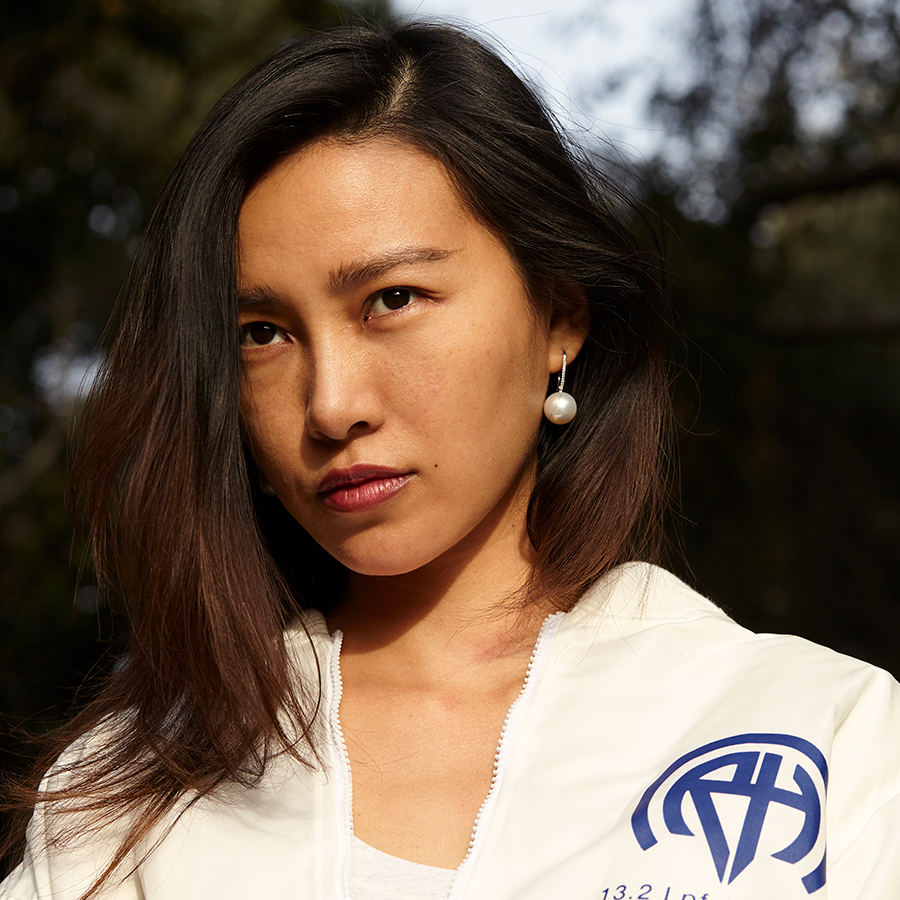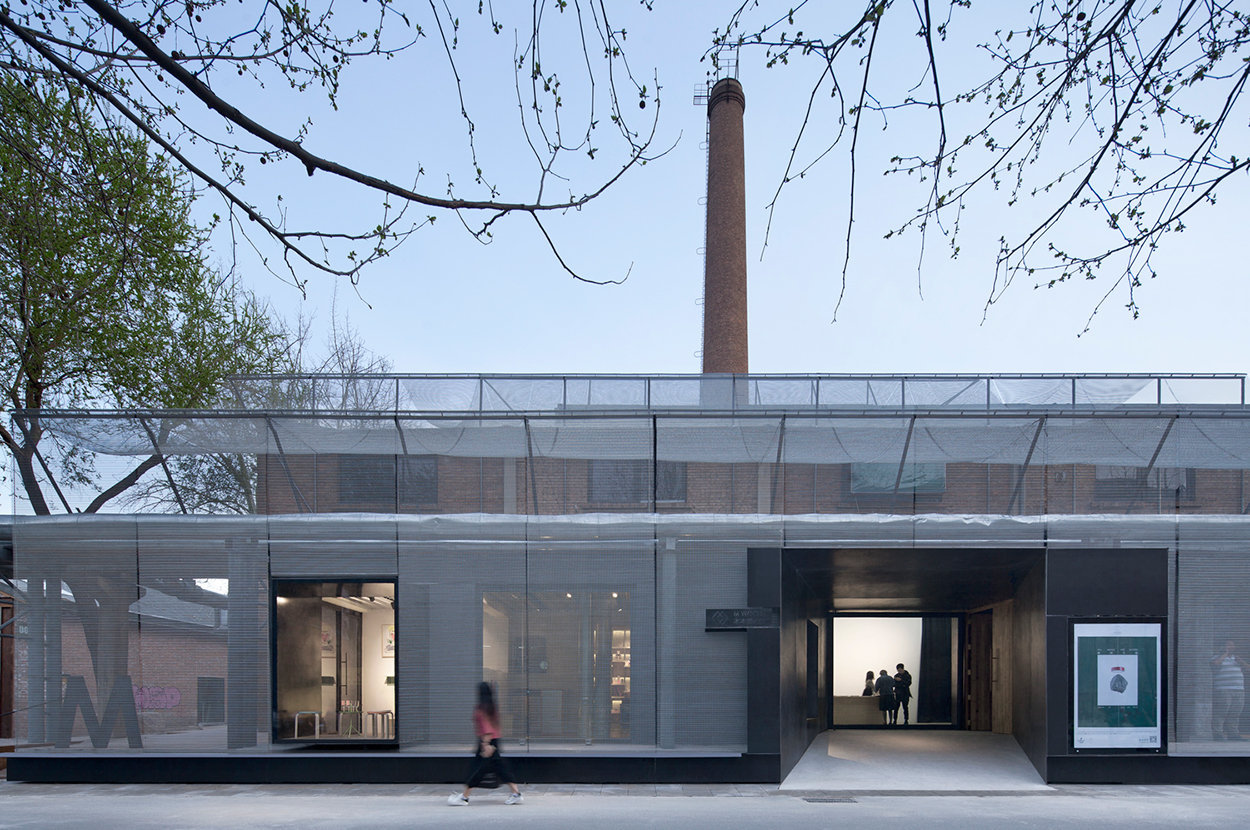Throughout her career, Chen Man has lived on the fringe of the avant garde, successfully straddling the line between digital art and fashion photography. Yet the Beijing-born photographer waxes nostalgic for the Chinese capital’s classic siheyuan courtyard houses, which date back to the 13th-century Yuan Dynasty. The walled compounds, along with teahouses, opera theaters, and silk shops, line the narrow hutong lanes of Dashilar, the central neighborhood of her youth, near Tiananmen Square. “I woke up hearing swallows and I slept to the sound of aunties playing mah-jongg,” she says.
A product of China’s one-child policy, Chen was born in 1980 to a doctor mother and graphic artist father who met in Inner Mongolia, forcibly settled there during Mao’s Cultural Revolution. At age 2, she picked up a pen and sketched a mouse that shared her family’s home within one of Dashilar’s cramped and decaying structures; her mother relentlessly pursued a master painter until he agreed to take her daughter on as a student.
Chen would go on to study graphic design, flash animation, and theater at a series of the most prestigious Chinese art schools. At China’s Central Academy of Fine Arts (CAFA)—a sort of state-run Rhode Island School of Design—Chen became one of the highly selective institute’s first photography majors. Her reasoning? “In photography, you get to meet a lot of people. That’s why I chose it.”
While still at CAFA, Chen’s work began appearing in the art magazine Vision. She gained attention for a series of coveres she shot for the magazine beginning in 2003. The images were so extensively digitally manipulated that many people debated whether or not they should be considered photography or graphic art.
Over the next five years, Chen’s cover art began to capture China’s cultural transformation, especially among the balinghou, the Chinese term for those born from 1980 onward. In the process, she emerged as a sort of voice of a generation, a Chinese Lena Dunham. Though many considered her style shocking due to its apparent repudiation of traditional Chinese beauty, Chen largely dismissed the critical storm that surrounded her early work. “Evolving from being a traditional painter to working in graphic design, I was always creating something from nothing,” she says. “For me, photography is just like a canvas in painting—the starting point from which I create.”
Back then, few in China were using Adobe Photoshop. “After those early Vision covers, fashion editors, movie stars, and A-listers started asking for me,” she says. The ensuing years have seen her fashion editorial work appear regularly in the Chinese editions of Vogue, Elle, and L’Officiel, as well as in international publications such as Harper’s Bazaar, Madame Figaro, and i-D. Rihanna and Nicole Kidman have posed for Chen, as have such boldfaced Chinese names as Shu Qi and Li Bingbing. In 2010, she styled Iron Man 3 actress Fan Bingbing for Chinese Esquire as Che Guevara, Bruce Lee, and Elvis Presley. China’s biggest female box-office draw, Fan has worked almost exclusively with Chen ever since. Her influence has extended past media as well: She’s led major campaigns for Adidas, Chanel, Dolce & Gabbana, and others.
For Chen, adding digital expertise to photography isn’t intended to alter the subject’s beauty. “I pursue precision, not perfection,” she says. That ethos is borne out in numerous projects that fall outside the norm of glossy fashion ideals—for instance, incorporating Tibetans and other ethnic minorities in magazine spreads, a significant statement in China, where a well-documented superiority complex among the vast majority of Han Chinese traces its roots back to the early Qing Dynasty. Chen regularly speaks of her quest to represent the full breadth of beauty in the country today, saying “There is no absolute beauty or ugliness. My talent is finding the right thing for the right object at the right time.” That ideal is conveyed through her numerous shoots of model Liu Yen, better known as “the ugliest model in China”.
Therein lies the enigma of Chen Man, a habitué of the commercial pop-culture universe who possesses the egalitarian spirit of an artist. Though Chen estimates she spends one-third of her time in the air and only about one week each month in Beijing, she’s still managed to recreate the close-knit community of her childhood within Studio 6, a photo studio in southeast Beijing designed by Taiwanese duo Vermilion Zhou. The largely native team of around 50 people interacts just as she remembers those in her neighborhood doing. “Even our distinctly Beijing accents are reminiscent of the way we spoke in the hutongs.”
In fact, her true muse is China. “Contemporary China, straightforward, as itself, is something I want to constantly explore,” says Chen, who also keeps a home in Southern California and works regularly in the European fashion capitals. “My work will always champion China chic rather than whatever is the passing trend here, like the Korean style of late.”
Chen Man’s Guide to Beijing
“Life has changed so dramatically in Beijing, yet Ritan Park is a walk back in time, past the crimson lacquered pavilions of Chinese watercolor paintings and older Beijingers dancing all day. You still hear the sound of mah-jongg being played here.” 6 Ritan North Road, Chaoyang District “I love the constructed statement coats that my ‘ugly duckling’ model and designer friend Lu Yan sells at Dongliang, a multibrand emporium focused on Chinese designers like the Shanghai-based Da Zhang and Uma Wang, a grad of Central Saint Martins, in London.” en.dongliangchina.com
“At the side of Wudaoying Hutong near the Lama Temple, King’s Joy is a vegetarian Buddhist eatery in a delightfully over-the-top setting with a misty moat and a harpist. The produce is sourced from nearby organic farms and the menu focuses on meat-free renditions of Chinese classics, such as sweet-and-sour mushrooms.” 2 Wudaoying Hutong
“The 798 Art Zone district is shamelessly commercial, but it’s also home to M Woods Museum, a private collection open to the public. Noteworthy international artists such as French painter Cristof Yvoré are exhibited here, along with contemporary Chinese artists like Zeng Fanzhi. It’s independent point of view is always consistent.” mwoods.org
“I like the great Chinese architect Liang Sicheng’s idea of building a new city out of the old one. Places like Yugong Yishan embody that. Located in the 19th-century courtyard of a Chinese warlord, it’s a live-music spot where I met my husband during the days of Beijing’s long-running hip-hop battles. It’s still one of the best places in town to hear burgeoning indie musicians like the Subs and SMZB.” yugongyishan.com





